Written by: Zahrah Mazhar
Posted on: June 10, 2016 | 
Place Moulay El Yazid

Although it was the Almoravids who founded Marrakech in 1062, it was the Almohads (1147—1269) who left their distinct mark in the form of a 77-meter, imposing minaret attached to the Koutoubia Mosque. Unlike the slender conical pillars found in the majority of the Muslim world, the minarets in Marrakech are looming square towers. The mosque, the largest in the city, gets its name from the Arabic word koutoubiyyin, meaning "bookseller," and is one of the most recognized Moorish structures from the Almohad dynasty; the others being the Giralda of the former mosque of Seville, the Hassan Tower of Rabat, and the Atalaya Castle in Andalusia.
The Koutoubia Mosque stands tall in the Medina of Marrakech, a UNESCO World Heritage site that also houses a number of other historical structures, including the Medresa Ben Youssef. One of the largest Islamic educational institutions in North Africa, the madrassa could accommodate 900 students. Carved cedar wood, delicate stuccowork, and colourful zelij tiles, along with Arabic inscriptions, can be seen throughout the large building.
Traveller’s tip: When you walk out of the madrassa, you’ll come across the Fondation Dar Bellarj, a former hospital for injured livestock that is now devoted to protecting Moroccan culture; a lovely space for art and culture enthusiasts.
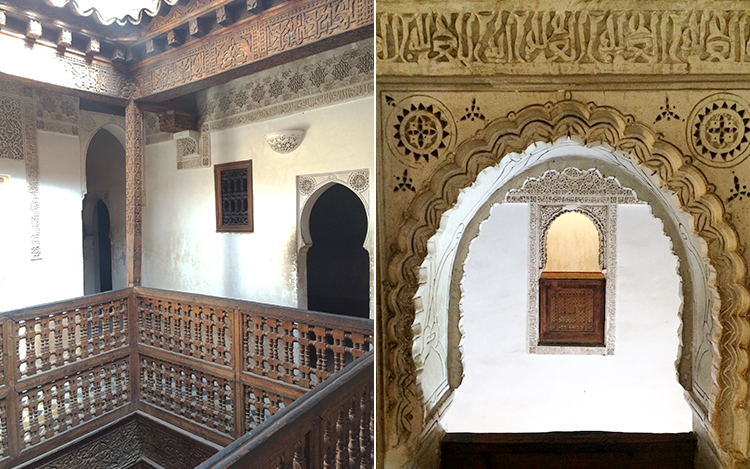
The unique architecture of the madrassa is largely credited to the Saadian rulers (mid-1500s to 1659) who almost completely rebuilt the structure. You’ll find similarities in the interiors of the madrassa and the Saadian Tombs located in the Kasbah district of the Medina, with the latter also featuring colourful tiles, Arabic script, and ornate carvings. The site may have been a graveyard before the Saadian period, but the earliest known burial dates from 1557.
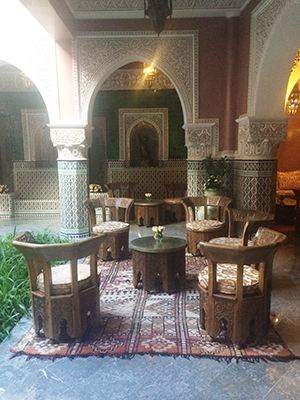
Traveller’s tip: Allot some time to exploring the Kasbah area; it is less crowded than the Jemaa el Fna and has a more European feel to it. Tucked inside its lanes is the La Sultana luxury riad/hotel; its décor alone renders it worthy of a visit, not to mention the luxe spa and rooftop coffee shop with views of the Kasbah Mosque.
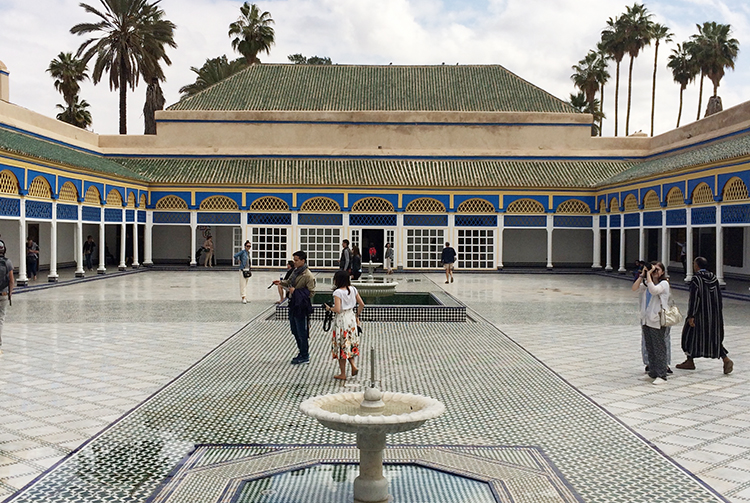
The nearby Bahia Palace, however, has retained its grandeur and holds its position as an architectural gem. The Bahia (meaning “brilliance”) Palace was in use between 1859 and 1873 and was completed by 1900—the exact dates of the construction are debated, but took approximately 15 years to complete. The painstaking attention to detail is evident in the panels of girih (Islamic geometric patterns) and zelij lining the corridors and floors, as well as in the painted wooden ceilings. The large marbled courtyard is encircled by outdoor galleries, the colour scheme of which—blue, green, and yellow—works seamlessly against the open sky and tall trees.
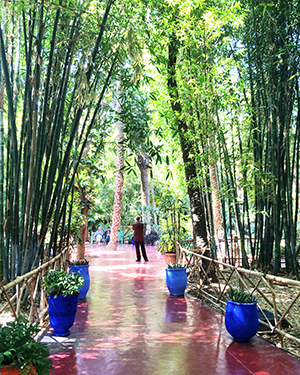
When you eventually step out of the Medina and pass through the modern neighbourhoods to reach French painter Jacques Majorelle’s blue garden, you’ve entered the early 20th century of Marrakech, when the French were able to colonise Morocco. As far as landmarks go, the Jardin Majorelle is perhaps the most significant piece of architecture in the city from the colonial rule. The garden was designed in the 1920s, complete with marble pools, raised pathways, banana trees, and groves of bamboo, coconut palms, and bougainvillea—but it was the bold and brilliant colours used by the painter that made the oasis famous. When you step into the garden, you’ll be engulfed in the intense blue—known as “Majorelle blue”—that pops against the lush greenery.
The Jardin Majorelle’s history and beauty was further enhanced when French designer Yves Saint Laurent and his friend Pierre Bergé bought it in 1980 and saved it from becoming a real estate project. Today, Jacques Majorelle’s studio has been transformed into a museum dedicated to Berber culture, featuring a fascinating collection of clothing, jewellery, and other artefacts.
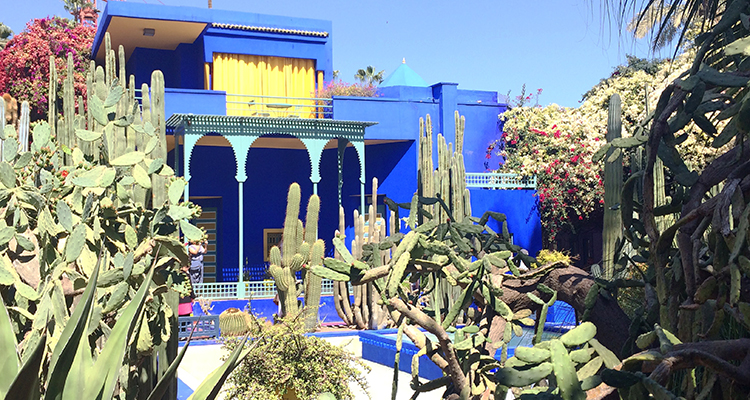
The late Yves Saint Laurent said that he found an unlimited source of inspiration in the Jardin Majorelle—one visit to the blue retreat and it’s easy to understand why.
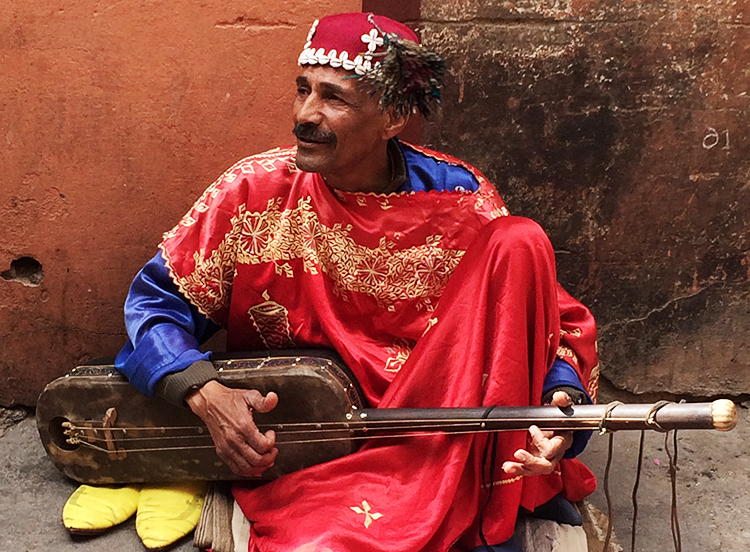
Traveller’s tip: If you want to experience the modern side of Marrakech, explore the Gueliz district. It has a relaxed atmosphere, plenty of high-street shops that don’t require bargaining, as well as contemporary cafés and galleries.
You may also like: